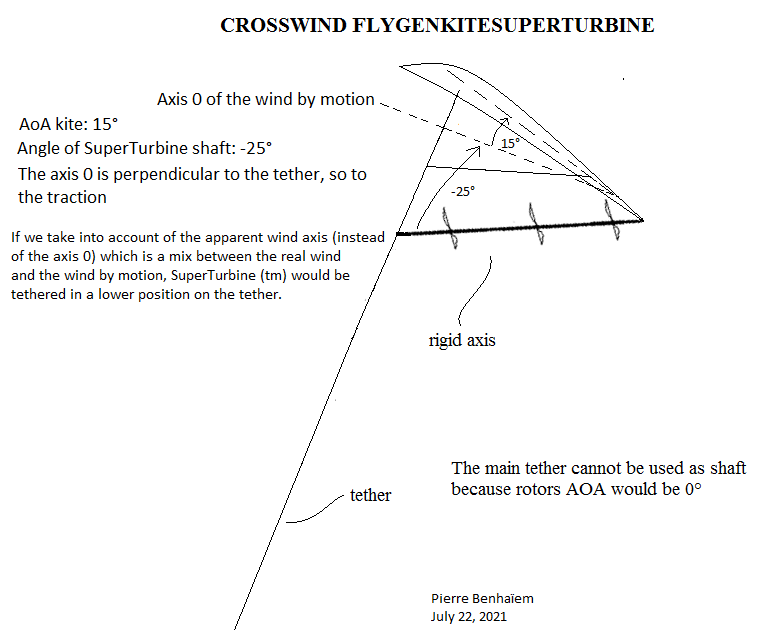Airborne wind energy systems using flygens (onboard generators) do have several drawbacks, despite their innovative design.
-
The Square Law: From a purely physics standpoint, power generation is proportional to the cube of the wind speed. A flygen system that uses onboard generators to create drag and convert kinetic energy into electrical energy is less able to exploit increases in wind speed, because the additional drag slows the kite down. For instance, if the wind speed doubles, the potential power increase by a factor of eight is difficult to fully realize because the generators add drag that prevents the kite from accelerating as much.
-
Weight: Onboard generators, along with a conductive tether and other necessary equipment, add significant weight to the kite. This reduces maneuverability, can decrease flight time, and increases the energy required to launch and keep the kite airborne.
-
Cost: Flygen systems are typically more expensive to construct, operate, and maintain. The generators themselves, the conductive cable for the tether, and the advanced materials (such as carbon fiber) for the kite structure, all add to the costs. These systems also require more complex control systems to manage the power generation and flight, further increasing costs.
-
Safety: With the increased weight and complexity, there is also increased risk of failure, which can lead to accidents. If a flygen system crashes, it could cause significant damage due to the weight and speed of the system. This risk is especially high in populated areas or sensitive environments.
-
Energy Transfer: The energy has to be transferred from the kite to the ground station via a conductive cable. The energy transmission over long distances may lead to power losses, reducing the overall efficiency of the system.
-
Maintenance: Maintenance of these systems is more complicated than for simpler designs like tension-based systems. The onboard generators are exposed to harsh conditions and require regular checks and servicing.
-
Limitations on Site Selection: The extra weight of the system may also limit where these systems can be deployed. They require stronger and more consistent wind conditions to be economically viable, which limits their site selection.
In contrast, a ground-gen system that relies on tension on the line to generate power can potentially extract more energy from an increase in wind speed, because it doesn’t have the drag from the onboard generators slowing down the kite. These systems are simpler, lighter, and often more cost-effective, especially in terms of installation and maintenance. Their safety profile is also better because they do not require heavy equipment to be kept airborne. Therefore, for many applications, ground-gen systems can provide a better balance of power generation, cost-effectiveness, and safety.
Certainly, it’s crucial to emphasize that the points raised above are not an attack on flygen technology, but rather a critical analysis of some of the challenges that this innovative approach faces.
There is immense potential in flygen technology, and the exploration of different methodologies and designs is what drives advancement in any field. Each approach has its unique strengths and weaknesses, and by acknowledging these, we can better focus our efforts on improvements and innovations.
I wholeheartedly welcome feedback, thoughts, and additional perspectives on this topic.


